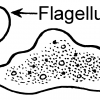Magnetically Controlled Microbots
Remember those old movies where they use a shrink ray on a team of scientists to go inside a person’s body? Safely inside their microscopic submarine, they enter the patient in order to unclog an artery or destroy some deadly germ. There’s usually one guy trying to sabotage the whole operation.
While science has yet to perfect shrink ray technology, new advances in microbiology may soon have a way of controlling bacteria-sized microbots capable of following magnetic directions to ailing parts of the body. This advent could be used for minimally invasive exploratory surgery or even to deliver medicine to the exact spot the body needs it.
What Are These Microbots?
Basically, teeny tiny remote controlled robots. In a report released earlier this month, scientists from Switzerland’s top research facilities reported they have developed an entire fleet of microbots, all capable of performing different tasks. They drew their design from different types of bacteria, borrowing attributes from various species.
The most important feature might be the flagellum. Flagella are essentially little tails certain bacteria use to propel themselves through their environments. The developers of this project took this natural appendage and adapted it for their microbots. One bacterium in particular was very influential, trypanosomiasis--better known as sleeping sickness. This way the microbots are able to travel in a manner that is already proven to work.
Where Do Magnets Come In?
Once again, the power of magnetism comes to the rescue. The microbots are coated in a special gel that is not harmful to the body. Embedded in the gel are magnetic nanoparticles, almost like microscopic ferrofluid. These nanoparticles possess a magnetic field that can then be manipulated from elsewhere. In other words, these microbots are the world’s smallest remote controlled vehicles.
There seem to be numerous possibilities for this kind of technology. Not only could it help with curing illness, but it might also be able to pinpoint and get rid of obstructions such as blood clots. Scientists are also hopeful that as they continue to explore these innovations that they will learn more about the bacteria themselves.
Whatever applications may come, it’s apparent that none of it would be possible without the use of magnetism. Magnetic properties and materials continue to be used to produce amazing technological advances. What’s your favorite magnetic breakthrough?

